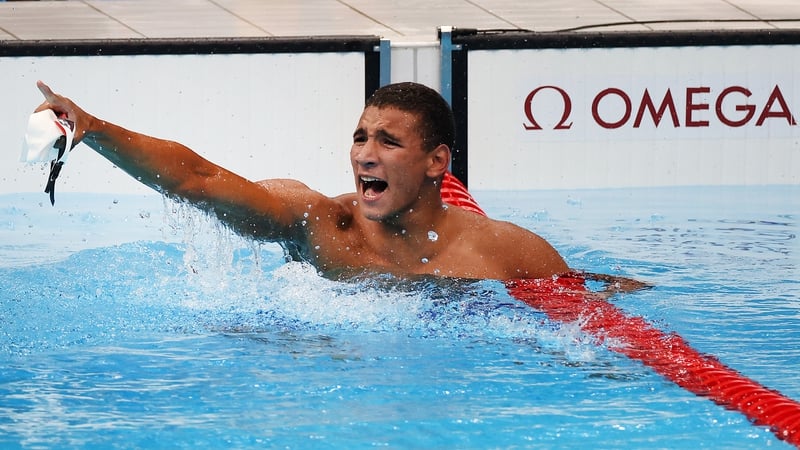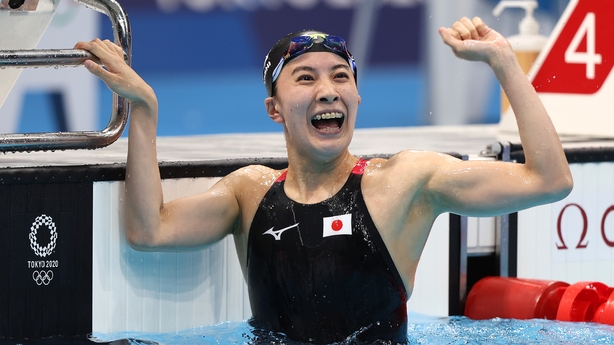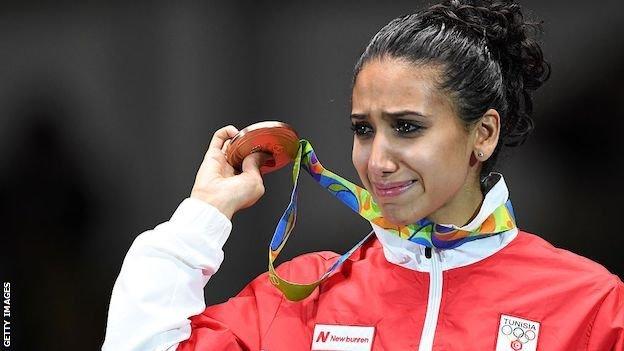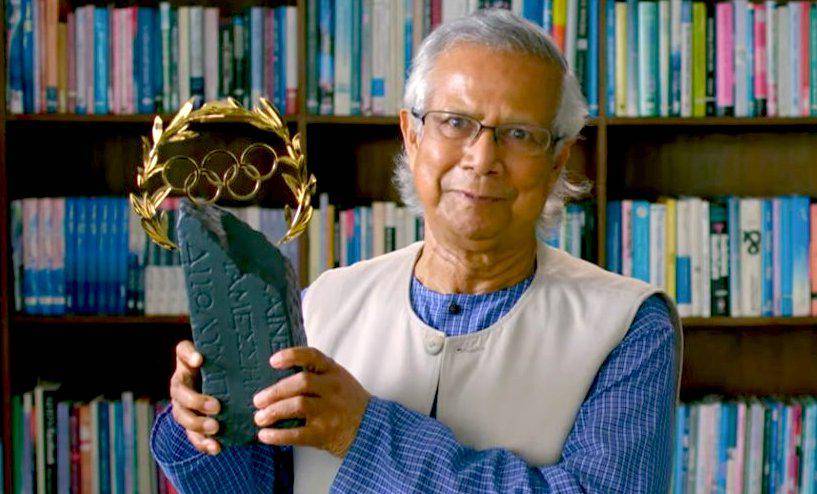A small Canadian oil explorer may have shocked the industry this year when it published initial results that pointed to the potential of a giant oil discovery in Namibia’s Kavango Basin.
Editor OilPrice.com
July 8, 2021·
Now, as our anticipation builds over the next drill results, this small Canadian driller looks to be attracting attention from around the globe.
In April, Reconnaissance Energy Africa (TSXV:RECO, OTC:RECAF) announced early findings from the first of their initial 3-well drill program in Namibia’s 6.3-million-acre Kavango Basin. It came as a surprise to many of us: Results indicated signs of a working petroleum system after only the first test drill.
On June 3rd, investors got another surprise when RECO announced further indication of a working petroleum system in the shallow section of its second well.
Now, we’re waiting for an announcement about the completion of the second drill to 12,500 feet, which we think should be any day now.
Previous projections have compared the possible numbers with some of the largest oil discoveries in the world in recent years, like the Midland Basin in West Texas.
And Daniel Jarvie, an industry-recognized geochemist and source rock expert, thinks that the play is “pretty much a no-brainer. It will be productive and I’m expecting high-quality oil.”
He’s estimated the basin generated potential billions of barrels of oil—conservatively.
And he’s not the only industry-known scientist involved in this play.
Recognized geologist Bill Cathey was another early bird.
Cathey—whose clients have included supermajors such as ExxonMobil, ConocoPhillips, and Chevron—performed the entire magnetic survey interpretation of the Kavango Basin for ReconAfrica and was very clear in saying: “Nowhere in the world is there a sedimentary basin this deep that does not produce commercial hydrocarbons.”
What some are considering now is whether there is potential for this to be the last big onshore oil discovery that the world may ever see, as ReconAfrica looks to continue efforts to de-risk Kavango.
How Big Could This Potentially Be?
With the drilling of their first test well in an initial 3-well program, ReconAfrica has had to rely primarily on some encouraging survey data to guide them in their exploration work.

Reco
The results so far, however, are reported to have well exceeded their expectations.
In samples from the first well, ReconAfrica encountered clear evidence that ReconAfrica is sitting on a working petroleum system in the Kavango Basin.
In fact, they showed even more than that:
Sample log results from the first (6-2) stratigraphic test well (6-2) provided over 200 meters of light oil and natural gas indicators over three discrete intervals in a stacked sequence of reservoir and source rock. Oil was then extracted from these samples and the results supported an active petroleum system with multiple source intervals.
The second stratigraphic test well (6-1) has so far encountered 343 meters of oil and gas indicators just at the shallow level, further confirming an active petroleum system in Kavango. The well is now set to reach its full depth (12,500 feet) in the first part of this month, following a short break for maintenance, which has now been concluded, with drilling having resumed last week.
“These wells suggest there is commercial potential in the basin,” Recon Africa director Dr. James Granath, PhD Structural Geology, said in a recent statement. “It took 30 wells in offshore Norway to get to this point, we've been lucky enough to do it in the first two."
We’re also waiting for well analysis from some of the biggest names in the industry, including Schlumberger.
Is This Namibia’s Time to Shine?
Namibia’s never produced a barrel of oil in its history, so ReconAfrica’s (TSXV:RECO, OTC:RECAF) work here could put it on the global oil map for the first time, and in a very big way.
It could also transform the lives of many Namibians, starting with ReconAfrica’s efforts to use its resources to drill community water wells for Kavango residents, nearly half of whom live in generational poverty and are forced to transport water by foot for miles every day.

Kavango
One of ReconAfrica’s first moves as it began trying to prove up Kavango’s commercial potential was to drill water wells for the people of Kavango, and that’s only one part of its reported $10-million ESG commitment to the country and the region, $1 million of which has gone to Namibia’s COVID-19 vaccine program.
The company says the aim of this play isn’t unconventional, either, so the environmental impact questions are far less pressing. ReconAfrica has stated that it does not have any fracking permits and hasn’t applied for any, putting that brief controversy to rest.
Furthermore, the company reports that drilling is taking place more than 50 kilometers south of the ecologically sensitive Okavango River and some 260 kilometers west of the Okavango Delta.
2D seismic, for which ReconAfrica announced government approval this week, is reportedly being conducted by some of the best in the business, with the lightest impact in the world. In addition, ReconAfrica founder Craig Steinke has stated that the company is using 100% organic and biodegradable drilling fluids that are later used as vegetable garden fertilizers.
For Namibia, especially in an era with a strong focus on ESG, and with many eyes trained on efforts to avoid any more “resource curse” scenarios, there may be a lot at stake, and the local and national governments look to be fully on board.
"We are pleased with ReconAfrica's approach to working closely and in constant consultation with our office, the traditional leadership, local authority, and the community. This is only the beginning stages and we have already started to experience the positive economic and social impact of the project in our regions." Kavango East Governor, Bonifasius Wakudumo said.
What Happens Next?
Next, we anticipate lots of potentially exciting news for this small explorer sitting on what could be a supermajor-size exploration play at the final frontier of onshore oil that includes not only the 6.3 million acres of Namibia’s portion of the Kavango basin but also 2.2 million acres in Botswana.

Kavango
In a matter of days, we expect to hear the results of the completed second drill to 12,500 feet.
And now, 2D seismic is reported to be kicking off, with approval just granted by the Government of Namibia.
That will help ReconAfrica determine where to drill to commercialize this basin in the next campaign.
By the end of July, the company reports they plan to have started the seismic acquisition program, which they expect will help them target the most promising areas to drill for their next round.
If those results are positive and the project progresses, ReconAfrica (TSXV:RECO, OTC:RECAF) has a right to a 25-year production sharing contract, and they may seek to enter into potential JV negotiations, and that’s what we think could send this exploration play over the edge.
Other companies looking to capitalize on rising oil prices:
Exxon (NYSE:XOM) is a large multinational corporation headquartered in Irving, Texas. Exxon Corporation engages in the exploration and production of crude oil and natural gas around the world. With its headquarters being located in Dallas, Texas and with operations all over the globe, Exxon has been able to create an empire that has lasted for over 100 years.
Exxon was founded on October 17th, 1999 by John D Rockefeller Jr., who at the time was running Standard Oil Company of New Jersey (which would be later renamed as Exxon Company USA). The company began as a merger between two companies: Standard Oil Company of New Jersey and Humble Oil & Refining Co., which were both subsidiaries of Standard Oil Trust.
While Exxon is one of the world’s top oil producers, it isn’t ignoring the reality of the market. It has made major moves in its commitment to reduce its emissions. It claims to have about one-fifth of the world’s total carbon capture capacity. The company captures about 7 million tons per year of carbon.
Eni (NYSE:E) is a global energy company that was established in 1959. They have grown into one of the top 10 natural gas producers and are ranked #2 for production and reserves. Eni has operations around the world, with their headquarters located in Rome, Italy.
The oil major described 2020 as a “year of war”, regarding the energy crisis experienced in the face of COVID-1. But it may be too soon to see the issues faced last year as a thing of the past. Eni is committing to lower the price of oil at which the company breaks even going into 2021, as a means of tackling the uncertainty of the oil economy in the coming months. Francesco Gattei, CFO at Eni, stated that “Volatility is growing every year.”, highlighting the need to be prepared for the energy demand of the future. In fact, Eni has now set out a plan to lower its greenhouse gas emissions by 80% by 2050, leveraging natural gas as a major tool in its arsenal.
In addition to its natural gas push, Eni is also jumping on the green hydrogen bandwagon. In fact, in December, the Italian oil major announced a partnership with Entel to produce hydrogen using electrolyzers powered by renewable energy. “Our goal is to accelerate the reduction of our carbon footprint by implementing the best applicable low carbon solution, either green or blue, to reduce our direct emissions as well as switching to bio products to supply our clients,” Eni’s chief executive officer (CEO), Claudio Descalzi, said in a company statement.
Halliburton (NYSE:HAL) is a company that provides products and services to the energy industry. The company has been in business for more than 100 years, and it employs more than 50,000 people across the globe. Halliburton’s employees are located in over 80 countries around the world. Halliburton operates in four segments: upstream (oil exploration), downstream (manufacturing of oil products), engineering-and- construction, and chemicals. The company offers exploration services, such as drilling wells; production services such as well completion; processing services like natural gas liquefaction and refining.
Halliburton is one of the largest oilfield services companies in the world. The company has secured its place as a giant in the oil and gas industry. But it didn’t happen overnight. The oilfield services sector is highly competitive and ripe with innovation. In order to stay ahead, companies must be on the absolute cutting edge of technology. And that’s exactly what Halliburton has done. And recently, Halliburton increased the heat for its competition. Partnering with Microsoft, Halliburton has become one of the most exciting “tech” plays in the industry.
This partnership is significant. Microsoft, a leader in the tech world, is looking to bring machine learning, augmented reality, and the Industrial Internet of Things to the oil and gas industry, and Halliburton is welcoming the new take on the resource realm with open arms.
Pioneer Natural Resources (NYSE:PXD) is an independent oil and gas exploration and production company with a diversified portfolio of high quality assets in the United States. The company's operations are concentrated primarily in two areas: West Texas, where it has developed one of the most significant unconventional resource plays in North America, the Eagle Ford shale; and Southern California, where it has assembled a large position onshore Los Angeles basin. Pioneer Natural Resources was founded in 1954 by Ross Shaw who had long been involved with land leasing for drilling purposes. With his son James as president, they drilled their first well near Big Lake, Texas.
As a leader in the Permian, Pioneer is also making major waves in its commitment to cut back flaring in the region. In fact, Pioneer consistently flares a smaller percentage of its production than the basin average. The average flaring rate for oil producers in the Permian is 3.7%, according to GaffneyCline, yet Pioneer’s average is just 0.8%.
Despite its commitment to the Permian, however, CEO Scott Sheffield isn’t particularly bullish on the region in the short term. “I never anticipate growing above 5% under any conditions,” Sheffield also said. “Even if oil went to $100 a barrel and the world was short of supply.” The shale major CEO explained this was because the service costs associated with adding more drilling rigs would undermine profit margins.
Enterprise Products Partners (NYSE:EPD) is a leading provider of innovative solutions for the global energy industry. We partner with some of the world's most renowned companies and provide them with integrity, expertise, and innovation in all aspects of their business including: exploration, production, refining, transmission & distribution. Enterprise has been around since 1928 when it first started as an oil pipeline company in Tulsa Oklahoma.
Enterprise is the top transporter of natural gas liquids (NGLs) and also owns the most NGL fractionation capacity in the United States, as well as dock space for exports. Enterprise Products is the largest midstream MLP in the country. Enterprise has clearly read the signs of the times and has begun to work with partners to scale back its project backlog. In the past, EP was able to weather the normal industry headwinds thanks to robust cash coverage and manageable leverage. Unfortunately, Covid-19 has been anything but your average downturn, and EP has been forced to seriously cut back on Capex.
After spending $17 billion in capital projects in 2015-19, including new oil pipelines, NGL and LPG pipeline-and-export facilities, and NGL fractionation plants, the giant MLP spent just $2.5-$3 billion last year, down from a prior budget of $3.5-$4 billion as well as a combined $4 billion in 2021-22. However, these dramatic cuts are expected to pay off big time.
Canadian Natural Resources (NYSE:CNQ, TSX:CNQ) is a natural resources company that conducts oil and gas exploration, development, production, and marketing operations in Canada. They are one of the largest independent crude oil producers in Canada with producing assets primarily located in the Western Canadian Sedimentary Basin. The firm also operates two refineries: Strathcona Refinery near Edmonton, Alberta; and Scotford Refinery near Edmonton, Alberta.
Canadian Natural Resources was one of the few oil producers that kept its dividend intact after swinging to a loss for the first half of 2020. Though Canadian Natural Resources kept its dividend, it withdrew its production guidance for 2020, however. It also said it would curtail some production at high-cost conventional projects in North America and oil sands operations and carry out planned turnaround activities at oil sands projects in the second half of 2020.
Despite the negative stigma surrounding the the oil sands, the sector is starting to clean up its act a bit. And Canadian Natural Resources is leading the charge. And if analysts are right about Canada’s comeback, Canadian Natural Resources could be in for a big year.
Suncor Energy (TSX:SU) is a Canadian multinational energy company, headquartered in Calgary, Alberta. It operates Canada’s largest oil sands project - Suncor's Oil Sands Operations. The company is Canada's most profitable and one of the world's largest integrated energy companies with its operations spanning North America and 20 other countries around the world. With over $120 billion in assets, it has more than 10 million acres of land holdings for exploration and production across six continents.
Suncor has adopted a number of high-tech solutions for finding, pumping, storing, and delivering its resources. Not only is it big in the oil sector, however, it is a leader in renewable energy. Recently, the company invested $300 million in a wind farm located in Alberta.
MEG Energy Corp (TSX:MEG) is a Canadian energy company that provides natural gas and renewable power products and services to customers in Canada, the United States, Europe, and Asia. The company operates in three segments: Pipeline Services; Power Generation Services; Renewable Power Production. MEG has been able to grow their pipeline business by engaging with key stakeholders on regulatory fronts across North America as well as through expansion of their existing pipeline network.
The company’s large proven resources and their cutting-edge technology make MEG a promising company for investors looking to get in to the promising oil sands in Alberta
Gibson Energy (TSX:GEI) is an energy company that specializes in the production, transmission and distribution of natural gas. Gibson Energy has been providing reliable service to their customers for over 100 years. The company currently employs more than 1,400 people across North America.
Gibson has a long history in Canada’s oil and gas game, going back to 1953. The company has a diverse portfolio which includes transportation, storage, processing, marketing and distribution of oil, condensates, oilfield waste, refined products and natural gas. With Gibson’s huge array of assets and its multi-platform sales strategies, it’s hedged a lot of the risk for investors in an inherently high-risk, high-reward industry.
Pembina Pipeline Corp. (TSX:PPL) is a company that has been around for more than 50 years and was the first pipeline company in Canada to offer gas transmission services. They are now one of the largest natural gas transmission companies in North America with an annual throughput capacity of almost 66 billion cubic feet per day. This blog post will discuss Pembina's recent acquisition by Enbridge Inc., their financial performance, and how they view long-term growth opportunities.
Pembina Pipeline Corporation is a Canadian energy infrastructure business that provides products such as natural gas, oil, renewable power, and chemicals to customers primarily located on the eastern coast of North America from its operations in Alberta, British Columbia, Ontario and Quebec.
By. Jason Cantle
**IMPORTANT! BY READING OUR CONTENT YOU EXPLICITLY AGREE TO THE FOLLOWING. PLEASE READ CAREFULLY**
Forward-Looking Statements. Statements contained in this document that are not historical facts are forward-looking statements that involve various risks and uncertainty affecting the business of Recon. All estimates and statements with respect to Recon’s operations, its plans and projections, size of potential oil reserves, comparisons to other oil producing fields, oil prices, recoverable oil, production targets, production and other operating costs and likelihood of oil recoverability are forward-looking statements under applicable securities laws and necessarily involve risks and uncertainties including, without limitation: risks associated with oil and gas exploration, including drilling and other exploration activities, timing of reports, development, exploitation and production, geological risks, marketing and transportation, availability of adequate funding, volatility of commodity prices, imprecision of reserve and resource estimates, environmental risks, competition from other producers, government regulation, dates of commencement of production and changes in the regulatory and taxation environment. Actual results may vary materially from the information provided in this document, and there is no representation that the actual results realized in the future will be the same in whole or in part as those presented herein. Other factors that could cause actual results to differ from those contained in the forward-looking statements are also set forth in filings that Recon and its technical analysts have made. We undertake no obligation, except as otherwise required by law, to update these forward-looking statements except as required by law.
Exploration for hydrocarbons is a highly speculative venture necessarily involving substantial risk. Recon's future success will depend on its ability to develop its current properties and on its ability to discover resources that are capable of commercial production. However, there is no assurance that Recon's future exploration and development efforts will result in the discovery or development of commercial accumulations of oil and natural gas. In addition, even if hydrocarbons are discovered, the costs of extracting and delivering the hydrocarbons to market and variations in the market price may render uneconomic any discovered deposit. Geological conditions are variable and unpredictable. Even if production is commenced from a well, the quantity of hydrocarbons produced inevitably will decline over time, and production may be adversely affected or may have to be terminated altogether if Recon encounters unforeseen geological conditions. Adverse climatic conditions at such properties may also hinder Recon's ability to carry on exploration or production activities continuously throughout any given year.
DISCLAIMERS
ADVERTISEMENT. This communication is not a recommendation to buy or sell securities. Oilprice.com, Advanced Media Solutions Ltd, and their owners, managers, employees, and assigns (collectively, the “Company”) have not been paid by Recon for this article, but has been paid for a promotional campaign in the past and may again be paid in the future. As the Company has been paid and may again be paid in future by Recon for promotional activity, there is a major conflict with our ability to be unbiased, more specifically:
This communication is for entertainment purposes only. Never invest purely based on our communication. We have not been compensated for this particular article but may in the future be compensated to conduct investor awareness advertising and marketing for TSXV:RECO. Therefore, this communication should be viewed as a commercial advertisement only. We have not investigated the background of the company. Frequently companies profiled in our alerts experience a large increase in volume and share price during the course of investor awareness marketing, which often end as soon as the investor awareness marketing ceases. The information in our communications and on our website has not been independently verified and is not guaranteed to be correct.
SHARE OWNERSHIP. The owner of Oilprice.com owns shares of this featured company and therefore has an additional incentive to see the featured company’s stock perform well. The owner of Oilprice.com will not notify the market when it decides to buy more or sell shares of this issuer in the market. The owner of Oilprice.com will be buying and selling shares of this issuer for its own profit. This is why we stress that you conduct extensive due diligence as well as seek the advice of your financial advisor or a registered broker-dealer before investing in any securities.
NOT AN INVESTMENT ADVISOR. The Company is not registered or licensed by any governing body in any jurisdiction to give investing advice or provide investment recommendation.
ALWAYS DO YOUR OWN RESEARCH and consult with a licensed investment professional before making an investment. This communication should not be used as a basis for making any investment.
RISK OF INVESTING. Investing is inherently risky. Don't trade with money you can't afford to lose. This is neither a solicitation nor an offer to Buy/Sell securities. No representation is being made that any stock acquisition will or is likely to achieve profits.
Read this article on OilPrice.com

:quality(70):focal(1139x1712:1149x1722)/cloudfront-eu-central-1.images.arcpublishing.com/thenational/R5237EUSU7VLOYZIBHM4EOKBJY.jpg)
:quality(70)/cloudfront-eu-central-1.images.arcpublishing.com/thenational/J7RS2VFK3OUCHRIQ6K6JONLIWE.jpg)
:quality(70)/cloudfront-eu-central-1.images.arcpublishing.com/thenational/25KC4AEAJ3BYTXQSME2JEOKSXM.jpg)
:quality(70)/cloudfront-eu-central-1.images.arcpublishing.com/thenational/NOW4UI6TCM7NFTDQYUYMOMHWOE.jpg)











